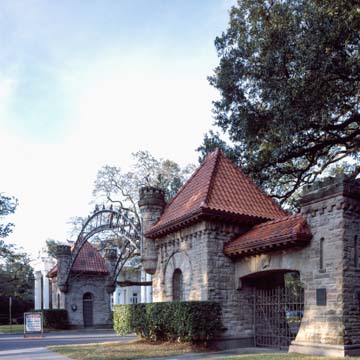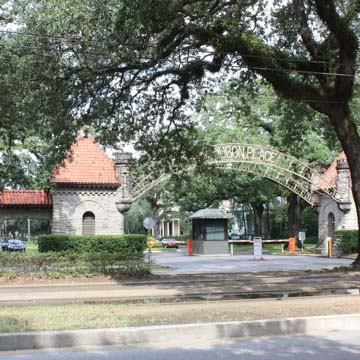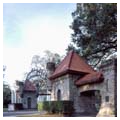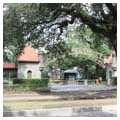A rusticated Richardsonian Romanesque lodge and gates stand guard at the entrance to this private landscaped street, New Orleans’s second residential park; Rosa Park, at the 5800 block of St. Charles Avenue, was the first, in 1891. The project was developed by a St. Louis syndicate and modeled on similar successful ventures there and in northern cities. Surveyor George H. Grandjean drew up a plan in 1894 for 28 lots, each with a 100-foot frontage facing a landscaped neutral ground. The lots sold for about $5,000 each, and the minimum construction cost of a house was set at $7,000. The most unusual of the enormous houses on Audubon Place is the Flonacher residence (1926), designed by Weiss, Dreyfous and Seiferth, which is sited at the far end of the block and partially visible from Freret Street. The Spanish Colonial Revival house has a bright pink stucco exterior and is decorated with tiles from Spain. Audubon Place popularized exclusive landscaped residential streets in this area of Uptown and neighboring Carrollton, but it is the only one in the city where access is limited.
You are here
Audubon Place Entrance Lodge and Gates
If SAH Archipedia has been useful to you, please consider supporting it.
SAH Archipedia tells the story of the United States through its buildings, landscapes, and cities. This freely available resource empowers the public with authoritative knowledge that deepens their understanding and appreciation of the built environment. But the Society of Architectural Historians, which created SAH Archipedia with University of Virginia Press, needs your support to maintain the high-caliber research, writing, photography, cartography, editing, design, and programming that make SAH Archipedia a trusted online resource available to all who value the history of place, heritage tourism, and learning.


















